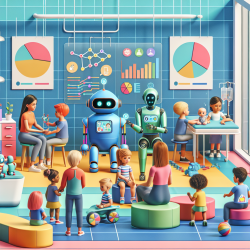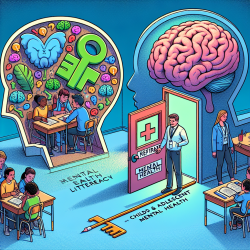Transforming Pediatric Therapy with Social Robots: A Data-Driven Approach

In recent years, the application of social robots in healthcare has garnered significant attention, particularly in pediatric therapy. The review article, "Application of Social Robots in Healthcare: Review on Characteristics, Requirements, Technical Solutions," offers a comprehensive analysis of how these robots can be integrated into various therapeutic settings to improve outcomes for children. Here, we distill the key findings and offer practical advice for practitioners looking to leverage social robots in their practice.
The Potential of Social Robots in Pediatric Therapy
The review identifies three primary categories of social robots used in healthcare: humanoid robots, companion robots, and telepresence robots. Each type offers unique benefits that can be tailored to meet the needs of children in therapeutic settings.
- Humanoid Robots: These robots, designed to resemble humans, can engage children through verbal and non-verbal communication, making them particularly effective in speech and language therapy.
- Companion Robots: Often designed to resemble pets, these robots provide emotional support and can help reduce anxiety in children undergoing medical treatments.
- Telepresence Robots: These robots facilitate remote interactions, allowing therapists to conduct sessions with children who may not be able to attend in-person therapy due to geographical or health constraints.
Data-Driven Benefits
The review highlights several data-driven benefits of incorporating social robots into pediatric therapy:
- Enhanced Engagement: Social robots can capture and maintain children's attention more effectively than traditional methods, leading to improved engagement and participation.
- Personalized Therapy: Advanced algorithms and sensors enable social robots to adapt their interactions based on the child's responses, providing a more personalized therapeutic experience.
- Reduced Anxiety: Companion robots, in particular, have been shown to reduce anxiety and improve emotional well-being, which is crucial for children undergoing medical treatments.
- Accessibility: Telepresence robots make therapy accessible to children in remote or underserved areas, ensuring they receive the care they need.
Practical Implementation Tips
For practitioners interested in integrating social robots into their therapy sessions, the following tips can help ensure successful implementation:
- Start Small: Begin with a pilot program to assess the effectiveness of social robots in your specific therapeutic setting. Collect data on engagement, outcomes, and satisfaction to inform broader implementation.
- Training: Ensure that therapists and support staff are adequately trained to operate and integrate social robots into therapy sessions. This includes understanding the robot's capabilities and troubleshooting common issues.
- Customization: Use the robot's advanced features to tailor interactions to each child's needs. This could involve programming specific exercises, adjusting communication styles, or using the robot to provide feedback and encouragement.
- Monitor and Adjust: Continuously monitor the robot's impact on therapy outcomes and make adjustments as needed. Use data to identify areas for improvement and to optimize the robot's interactions with children.
Encouraging Further Research
While the review provides a robust foundation, further research is essential to fully understand the long-term benefits and potential limitations of social robots in pediatric therapy. Practitioners are encouraged to participate in research studies, share their findings, and collaborate with interdisciplinary teams to advance the field.To read the original research paper, please follow this link:
Application of Social Robots in Healthcare: Review on Characteristics, Requirements, Technical Solutions.
Citation: Ragno, L., Borboni, A., Vannetti, F., Amici, C., & Cusano, N. (2023). Application of Social Robots in Healthcare: Review on Characteristics, Requirements, Technical Solutions. Sensors, 23(15), 6820. https://doi.org/10.3390/s23156820










